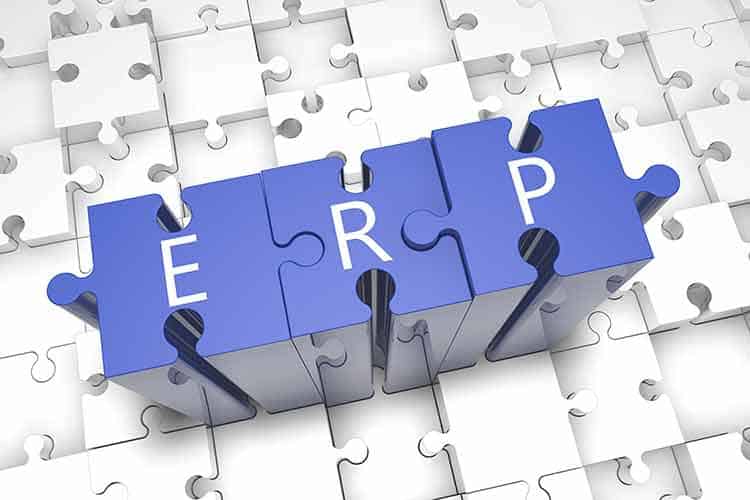-
This Is What You Need to Know about the Top Complaints of ERP Systems and How to Fix Them
ERP systems, short for Enterprise Resource Planning, are often referred to as the nerve center of an organization. A good, efficient and flexible ERP with a solid implementation can make a huge change in the way your company operates.
Unfortunately, a lot of companies find after an expensive and lengthy ERP implementation the results are somewhat underwhelming, especially long-term. Whether it happens shortly after implementation or after many years, most businesses face issues with their ERP systems.
In many cases, companies try to help ERP limp along by implementing partial automation in certain departments. They’ll cobble together a dysfunctional process developed to compensate for the needed functionality that’s missing from ERP programs. The combination of limited automation and ERPs stretched beyond their capabilities makes for a frustrating situation.
If your company is struggling with your ERP system, you’re not alone. It’s a common problem and we see many of the same complaints appear time and again. In today’s article, we’ve collected some of the most common issues businesses face working with ERP systems. Even better, we’ll offer solutions that will help your company face the biggest challenges that go along with inefficient ERP systems.

Complaint 1: Rigid Mechanisms
ERP software planners create tightly locked databases with pre-determined relationships. In certain situations, this can be great, as it keeps responsibilities segregated and prevents possible data issues.
Unfortunately, these types of databases leave a lot of companies with confusing data and more customization than intended. Their inflexibility creates a greater struggle when trying to accurately report on information and research granular details that help companies drive value.
Complaint 2: Lack of Accessibility
Once your ERP system is in place, letting everybody in can be difficult to manage. Even with having the software installed within your network some employees will always require remote access. For these users, you can set up terminals or VPNs. However, these types of connection typically slow down overall productivity, assuming the connection is available at all.
In addition, vendors may or may not have the ability to review important details through an ERP’s portal. And even if the ERP system does let you add vendors as users this option can be quite costly.
Complaint 3: Intake Problems
While you can solve a lot of back-end processes with ERP systems, a simple function like taking in documents presents a struggle. Although you have a better workflow, you still have all the same difficulties moving information through it. Turnaround times stay the same or sometimes worsen from status confusion.
This can cause difficulties in many departments. Take accounts payable as an example. ERPs were never designed to handle AP tasks. Trying to use them for this will decrease efficiency in the accounts payable department.
Complaint 4: Missing Details
There are a lot of fields which can be used in any flexible ERP system, but many of them have specific meanings and limitations. During the implementation, some data may have been stored in a strange or hidden place or been left out altogether.
You may also decide you need to store more data or report on something new after an implementation only to discover you have nowhere for the data to go. Even if the ERP comes with a customizable option to increase storage or change where information is stored, implementing any change will still be a challenge.
Complaint 5: Costly Changes
Once you’ve set up an ERP system, making adjustments to it often feels impossible. If your company doesn’t have internal resources, using the ERP’s support chain can be time-consuming and ineffective.
Even with internal resources, making operational changes in your ERPs to benefit your company may involve expensive, long-term projects. In many cases, such projects don’t appear to justify the costs and won’t be approved by upper management no matter how compelling your case is.
Complaint 6: Greater Needs
As time passes and markets evolve, your business may simply develop new needs that just won’t work with your current system. Companies change their strategies and ideas. Technology is improving constantly. It’s easy to get left behind if your system can’t change and adapt.
Unfortunately, it’s highly impractical to replace your ERP system or even complete upgrades as often as they occur. When you can’t upgrade your software, you’re missing out on the benefits of a changing digital world. You may also be stuck with processes that aren’t sustainable for your growth or direction.

Solution: Integrated Automation
If this list of ERP complaints sounds familiar, don’t panic. There are great ways to improve functionality in the departments connected with your ERP system. And the good news is, you won’t have to start from scratch. You can get dynamic, automatic software solutions that integrate seamlessly with existing ERPs and solve your top complaints about ERP systems.
If you’re thinking, “we’ve tried automation before and it didn’t help,” I invite you to keep reading. Much of the automation that has been used to enhance ERPs in the past is basic and highly limited. The automation we’re talking about today is much more sophisticated.
Modern business process automation software utilizes big data, machine learning, intelligent character recognition, and a host of other cutting-edge features to deliver improved functionality. And it’s very easy to implement (though this depends on exactly what type of automation you choose). Cloud-based automation, for example, integrates with existing ERPs and rapidly improves functionality without putting an additional burden on your IT department and giving you flexible ERP solution.
How NextProcess Can Help To Implement Efficient and Flexible ERP system
Here at NextProcess, we designed all our business processing software to integrate seamlessly with whatever ERP system you use. Here’s how our software answers the complains we looked at earlier in this article:
- Rigid Mechanisms – Where ERPs create tightly locked databases that leave you with confusing data, or software sets up digital databases that are easy to search. The software automatically stores all processing data and you can do full-text searches with just a few keystrokes.
- Lack of Accessibility – Granting remote access can be very difficult with an ERP. In contrast, authorized users can easily access our cloud-based software from any location with internet access.
- Intake Problems – Moving information through ERP-driven workflow can be a challenge. Our automation software solves this by making it easy to enter data from multiple sources, including digital and paper files.
- Missing Details – ERPs often use limited fields, and the system may store transferred data in strange places or leave some out altogether. NextProcess avoids this by using intelligent character recognition and image indexing to capture and store data accurately.
- Costly Changes – Adjusting an ERP system is typically both difficult and expensive, but our automation software updates automatically. As long as you use our software, we’ll keep it up-to-date for you.
- Greater Needs – ERP systems are typically too static and rigid to accommodate rapidly changing/growing businesses. Our software, on the other hand, is highly flexible. You can upgrade or customize whenever you like.
Don’t sacrifice best practices to stick with static software. Engage with a dynamic technology supplier like NextProcess to resolve your outstanding issues and improve processes across the board. We provide an online platform with several Flexible ERP software modules that bolt easily on to ERP systems to improve workflow, increase turnaround time, decrease staffing needs, and more. Click here to get in touch and schedule a free demo to see how our software can help your company.